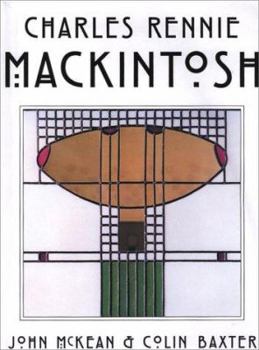Charles Rennie Mackintosh: The Life and Styles of Charles Rennie Mackintosh
Features some of the finest work produced by Mackintosh. This description may be from another edition of this product.
Format:Hardcover
Language:English
ISBN:0896585190
ISBN13:9780896585195
Release Date:January 2000
Publisher:Voyageur Press (MN)
Length:160 Pages
Weight:2.95 lbs.
Dimensions:0.9" x 9.6" x 12.2"
Customer Reviews
2 ratings
Yin and Yang Mate in the Cold Hard North
Published by Thriftbooks.com User , 22 years ago
Glasgow is as far North as Moscow. In the time of Charles Rennie Mackintosh it was a tough, smokey, industrial city still living in the shadow of centuries of Scottish Puritanism. Not exactly the most promising environment you would think for an artistic movement that created the works of exquisite beauty presented in this book. Charles Rennie Mackintosh, with a tight-knit group of fellow artists known as the Glasgow School, ensured that Glasgow at the turn of the century was an integral part of the international Art Nouveau movement, that was also flourishing in Paris and Vienna. The Art Nouveau movement is now seen as a major watershed in global culture because it was the first major art movement that drew inspiration equally from East and West. As art evolved away from representative art, spiritual aspects came more into play. As with the Secessionist in Vienna, the German Expressionist, and the French Symbolists, mystical ideas became increasingly prominent, turning much of this art into a kind of ouija-board farce. The ghostly and heavily-symbolic works of the other members of the Glasgow School earned them the nickname of the "Spook School" and saw them marginalized. But while much of the painting of the time reflects the faux spirituality of misunderstood oriental mysticism and sham seances, Mackintosh's work was distinguished by his deep, instinctive understanding of Oriental aesthetics, expressed unpretentiously in beautiful lines. This gave him the Midas touch at whatever he turned his hand to. In his painting, posters, stained glass windows, furniture, and architecture, we can see the masterly interplay of straight and curved lines. Although John McKean's rather pedantic text in the book doesn't really emphasise this point enough, what we in fact experience in the stimulating tension between Mackintosh's straight and curved lines, is no less than a fusion of yin and yang, the 'female' and 'male' components of the Universe. Fighting an uphill struggle in a city that didnÕt really understand his unique aesthetic, Mackintosh still managed to do an impressive amount of work as Colin Baxter's excellent pictures reveal. The greatest fulfillment of his art is in 3-D work, especially his furniture designs, which are notoriously difficult to photograph well, although here Baxter does a good job. It was with furniture, especially in his many chair designs, that he most fulfilled his aesthetic. While most furniture designers of the period gave into the yin or the 'feminine,' with over-elaborate curves and rich decoration, creating a heavy effect, Mackintosh played these 'feminine' aspects off against the yang or 'masculine' by emphasizing simplicity and straightness, creating an uplifting tension that was not only beautiful in itself but also interacted with the curvature of the human form. While much of Art Nouveau art and design is forever anchored in the historical period that created it, the work of Mackintosh continues to float with us int
Insightful appraisal of Mackintosh's kaleidoscopic talents
Published by Thriftbooks.com User , 23 years ago
In Charles Rinnie Macintosh: Architect, Artist, Icon, John McKean and Colin Baxter collaborate to showcase Charles Mackintosh's kaleidoscopic talents as an architect, painter, furniture designer, and graphic artist. They provide an insightful appraisal of Mackintosh's unique talents and offer an informative overview of both the man and his achievements within the context of his personal life and times -- and how his work is viewed today. Enhanced with often stunningly beautiful photographs, Charles Rinnie Macintosh is an outstanding contribution to personal and academic artbook reference and art history collections.






